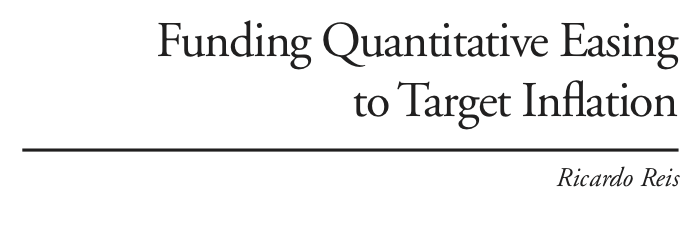
During my Lamfalussy fellowship at the @BIS_org, I wrote a paper for its annual conference on “The constraint on public debt when r < g but g < m”.
A short thread on economic policy implications from the paper. (Ungated at bit.ly/3m2BmOX)
1/14
cepr.org/active/publica…
A short thread on economic policy implications from the paper. (Ungated at bit.ly/3m2BmOX)
1/14
cepr.org/active/publica…
The bread-and-butter of analyses of whether the public debt is sustainable is the government budget constainrt:
Public Debt + PV(govt purchases + transfers) = PV(tax revenues)
(PV is for present value using a discount rate.)
2/14
Public Debt + PV(govt purchases + transfers) = PV(tax revenues)
(PV is for present value using a discount rate.)
2/14
The cruel side of this equation is that if investors think it won’t hold, because debt is too high, then the discount rate spikes, and the PV of tax revenues crashes. It becomes more likely that country can't pay for the debt. The self-fulfilling nature of sovereign defaults
3/14
3/14
The “austerity debates” revolve around whether cutting spending lowers growth (g) so much that the discount rate rises, so that in the end PV(spending) actually rises. If so, again it is more likely that the LHS is too high relative to RHS, and default is on the way.
4/14
4/14
A large and rich literature evaluates and studies "adjustment packages." These evaluate which policies raise or lower these PV terms, and so tighten or loosen the constraint on how much public debt can grow. In policy, @IMFNews is one of its big users (and contributors).
5/14
5/14
My paper: when the interest rate on debt is below growth rate (@ojblanchard1's r<g) but the return on capital is above it (@PikettyLeMonde's m>g, but he called m by r), there is a new positive term in the RHS adding to revenues. It is:
PV(revenue from debt)
6/14
PV(revenue from debt)
6/14
The revenues arise from m>r: investors charge the government less than what they could get by investing in economy. Economists sometimes call this a “bubble” component of the asset, sometimes its “convenience revenue”, or sometimes “seignorage” (in analogy with currency).
7/14
7/14
Governments can spend more than we previously thought. Good news, since they already spent more in the last decade, even as the m-r gap rose, and the debt revenue term increased.
How much? Rough calculations say 3-5% of GDP p/a Covers pre-Covid CBO forecasts, but no more.
8/14
How much? Rough calculations say 3-5% of GDP p/a Covers pre-Covid CBO forecasts, but no more.
8/14
My paper discusses why is m>r, so why is there a debt revenue term. I emphasize the safety and liquidity that public debt offers, and their effect on capital (mis)allocation.
Economic theory let’s you ask counterfactuals: how do changes in policies affect this new term?
9/14
Economic theory let’s you ask counterfactuals: how do changes in policies affect this new term?
9/14
For instance, on the austerity question: more spending (on net) may increase m-r, and yet lower the debt-revenue term. There is a limited “fiscal capacity” because if the government spends too much, the new term collapses to zero. The public debt bubble pops.
11/14
11/14
For monetary policy to maximize the debt-revenue term du to m>r, it should pursue price stability. Lower inflation risk increases the safety of the public debt. So, it allows for a larger m>r, and larger debt-revenue.
12/14
12/14
On taxation, a novel kind of Laffer effect appears: tax cuts can (note, can, not will) pay for themselves by raising the debt-revenue term, because they boost private credit market activity, and can raise m-r.
13/N
13/N
More in the paper, including the effects of redistribution, foreign demand for bonds, runs on the debt.
Main message for researchers and policymakers: we should investigate the debt-revenue term that results from r < g < m.
14/14
Main message for researchers and policymakers: we should investigate the debt-revenue term that results from r < g < m.
14/14
Follow others on twitter doing work on the term:
1) @HannoLustig on its size, which seems implausibly large (a valuation puzzle)
2) @neilmehrotra and @d_sergeyev on fiscal limits
3) @MarkusEconomist on its risk properties
4) @JohnHCochrane on US policy challenges
And others...
1) @HannoLustig on its size, which seems implausibly large (a valuation puzzle)
2) @neilmehrotra and @d_sergeyev on fiscal limits
3) @MarkusEconomist on its risk properties
4) @JohnHCochrane on US policy challenges
And others...
• • •
Missing some Tweet in this thread? You can try to
force a refresh




